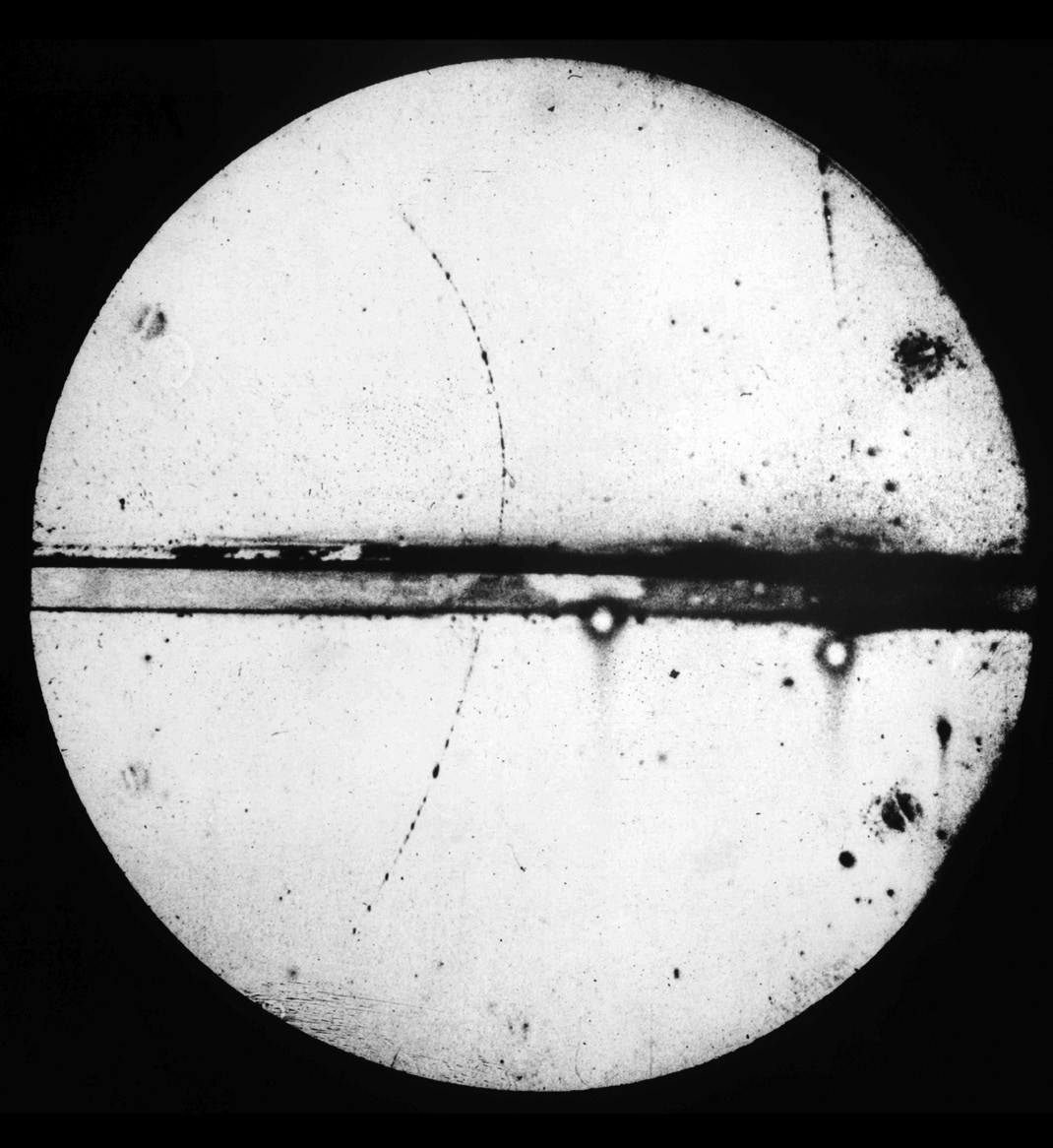
In 1932, American physicist Carl Anderson (1905–1991) found the first observational evidence for antimatter. In the crucial cloud chamber photograph (Figure 1), a magnetic field deflected the track of a particle as it travelled through the chamber and passed through a lead plate. The tighter curve above the plate indicates that the particle had less energy in the upper part of the photograph so it was travelling upwards. The direction of curvature shows that the particle had positive charge, though in other respects the track resembles that of an electron. The track was produced by an anti-electron (a positron), which has the same mass as an electron but opposite charge.
Anderson was awarded the 1936 Nobel physics prize for his discovery and his analysis of the positron track. In the 80 years since Anderson’s discovery, vast numbers of antimatter particles have been detected and studied using bubble chambers (Figure 2) and other detectors.
Your organisation does not have access to this article.
Sign up today to give your students the edge they need to achieve their best grades with subject expertise
Subscribe




